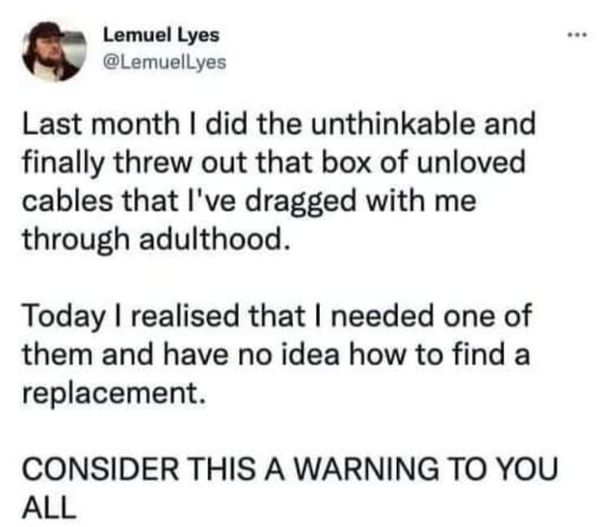this post was submitted on 20 Aug 2024
2189 points (99.3% liked)
Microblog Memes
5837 readers
1341 users here now
A place to share screenshots of Microblog posts, whether from Mastodon, tumblr, ~~Twitter~~ X, KBin, Threads or elsewhere.
Created as an evolution of White People Twitter and other tweet-capture subreddits.
Rules:
- Please put at least one word relevant to the post in the post title.
- Be nice.
- No advertising, brand promotion or guerilla marketing.
- Posters are encouraged to link to the toot or tweet etc in the description of posts.
Related communities:
founded 1 year ago
MODERATORS
you are viewing a single comment's thread
view the rest of the comments
view the rest of the comments

I have my portable folding 200w solar panels on the ground and run about 20ft of weatherproof cabling running along the ground through a small inlet hole into my residence. They connect to my battery system which is located in a good central spot for all my electrical stuff to comfortably reach. Everything I own that runs on electrical power that cant be powered with portable rechargable battery banks is located in the same room as my batteries.
I can deliver DC power through car plug ports, USBC-PD 100W and regular usb A outlets. The 600w AC inverter is useful for brewing cups of coffee, running fans, and turning on a desktop pc for advanced GPU workload stuff. Its important to keep that ac inverter off most of the time especially at night so prefer using car plug adapters and USBC-PD to directly power most of my DC appliances with variable voltages instead. From the car plugs and usbc-pd charger ports, I run my dc appliance cords to my devices which are usually 6-10 ft long. My laptop is usually powered up through a car port travel adapter but I can also use USBC-PD and an adapter bit if the car ports are all taken up.
Thank you for showing interest if you want to know anything else ill be happy to explain. lowtechmagazine's "Slow Electricity: The Return of DC Power" is a great read on the subject the info has been very useful for my purposes. They cover residential dc wiring like we are talking about and its located around the end of the article in the 'How To Limit Cable Losses' section.